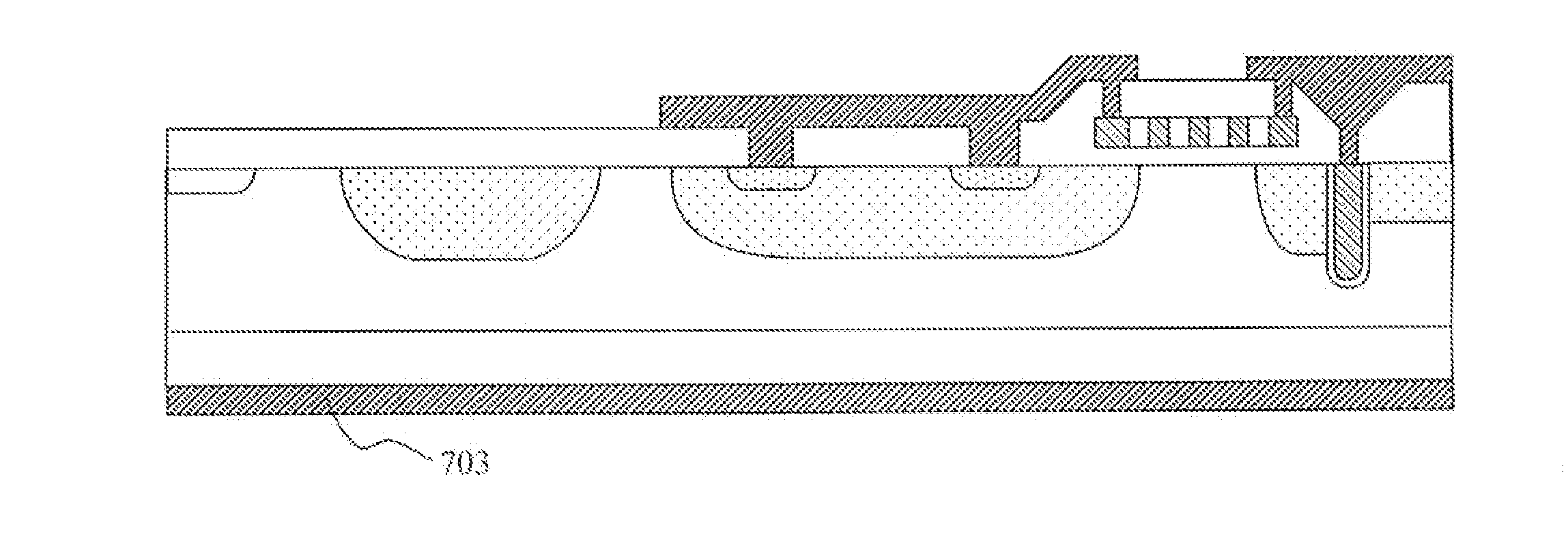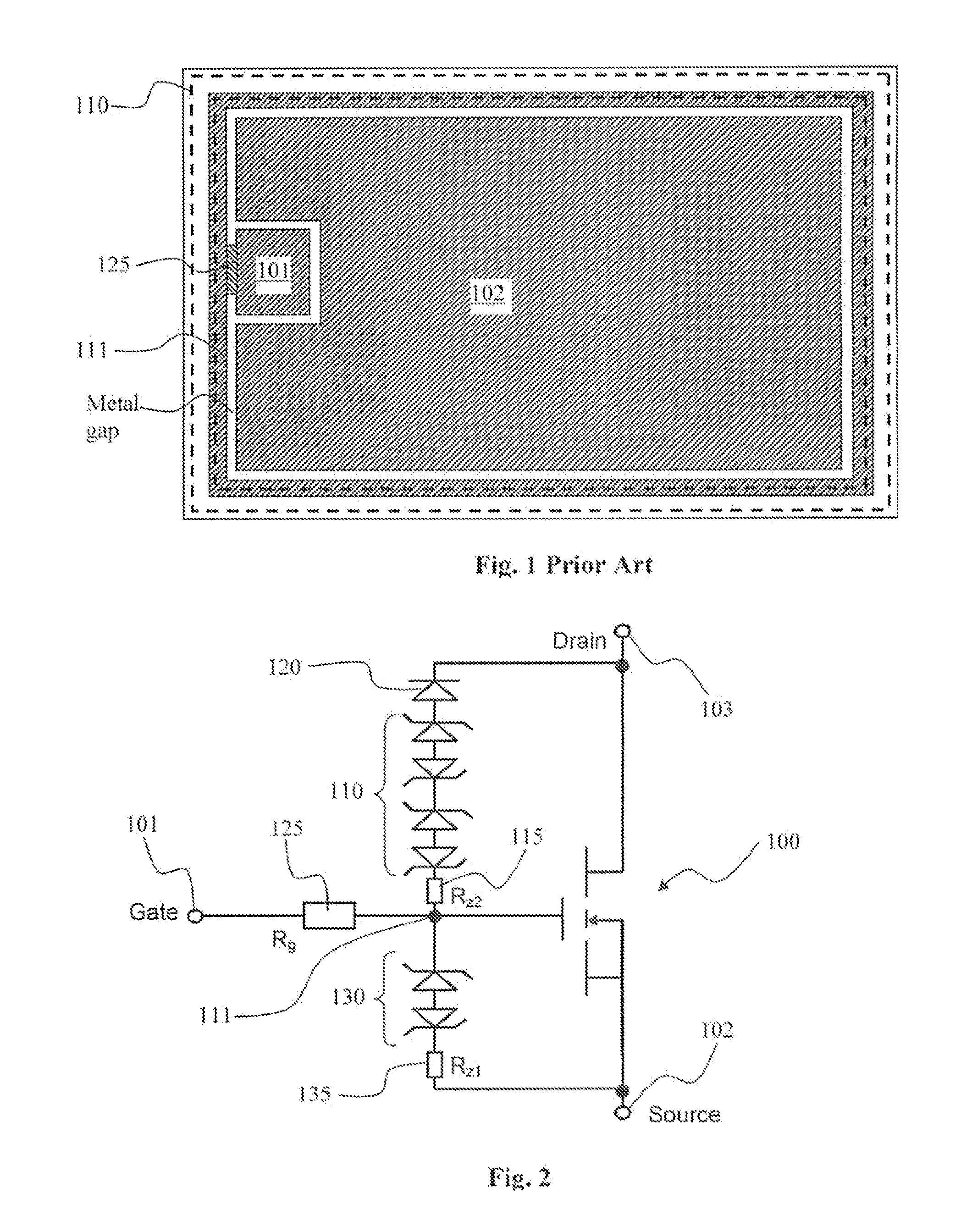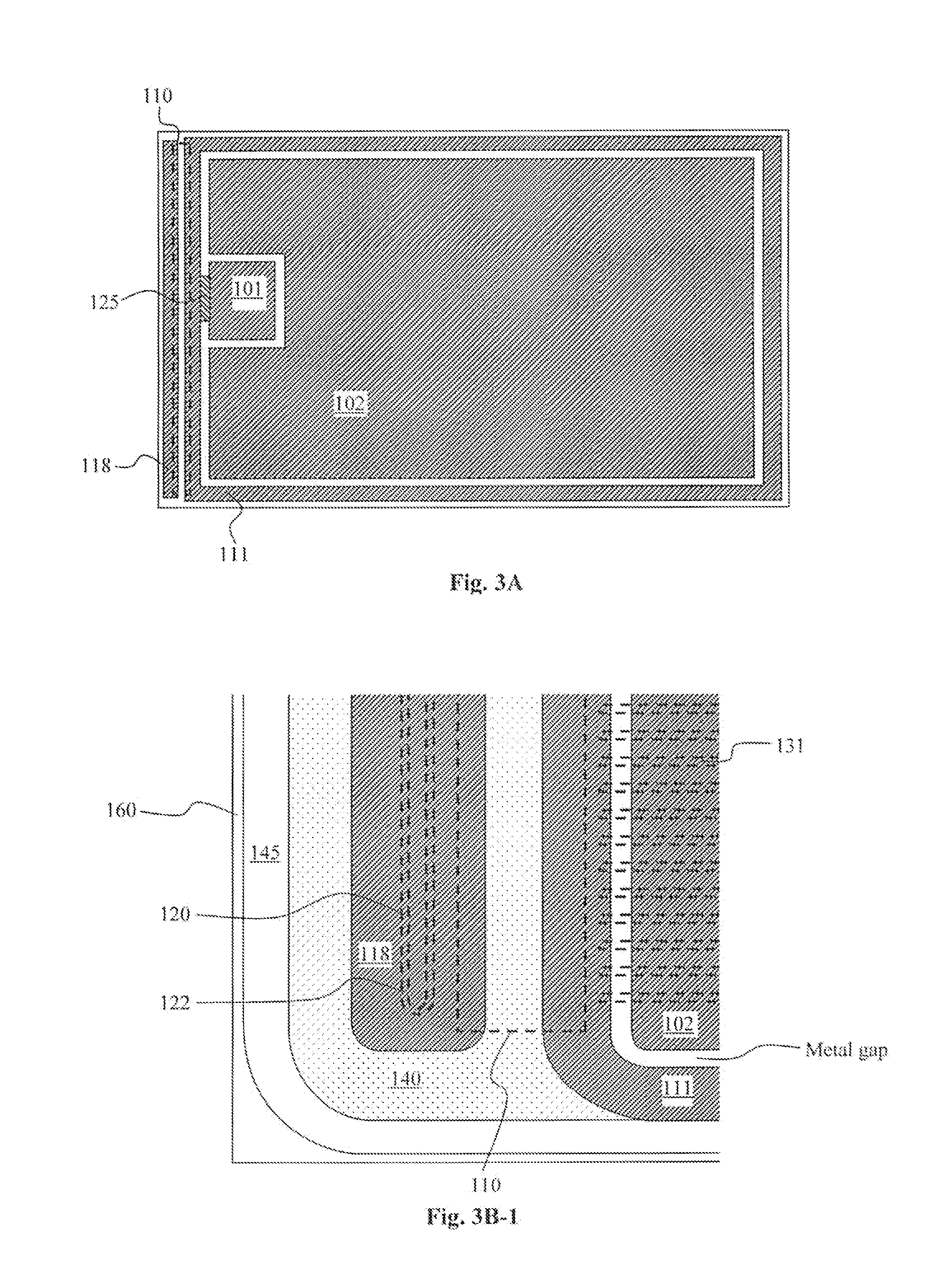Configuration of gate to drain (GD) clamp and ESD protection circuit for power device breakdown protection
a protection circuit and gate to drain technology, applied in semiconductor devices, diodes, semiconductor/solid-state device details, etc., can solve the problems of increasing the production cost of power devices, increasing the size of power devices, and limiting the conventional layout of manufacturing semiconductor power devices with protection circuits against breakdown and also against electrostatic discharge (esd). the effect of reducing the width of the gate to drain zener diodes
- Summary
- Abstract
- Description
- Claims
- Application Information
AI Technical Summary
Benefits of technology
Problems solved by technology
Method used
Image
Examples
Embodiment Construction
[0023]FIG. 2 is a circuit diagram to illustrate the breakdown protection circuit of a MOSFET device 100 of this invention. The MOSFET device has a gate electrode 101, a source electrode 102 and drain electrode 103. The GD clamp circuit applies a combination of gate to drain Zener diode pairs, shown as polysilicon diodes 110 with a parasitic resistance Rz2115, a silicon diode 120 and a small gate resistor Rg 125 to serve the function of breakdown protection for the power MOSFET. The Zener diode pairs 110 comprise back-to-back Zener diodes. In addition to the GD clamp circuit, the breakdown protection circuit may further comprise a gate-to-source ESD protection circuit including gate-to-source Zener diode pairs 130 with parasitic resistance Rz1115. FIGS. 3A-D below further illustrate that the gate to drain Zener diode pairs 110 that are formed at only one side of the die. Therefore, die size is reduced as compared to conventional design. The GD clamp circuit is electrically connected ...
PUM
 Login to View More
Login to View More Abstract
Description
Claims
Application Information
 Login to View More
Login to View More - R&D
- Intellectual Property
- Life Sciences
- Materials
- Tech Scout
- Unparalleled Data Quality
- Higher Quality Content
- 60% Fewer Hallucinations
Browse by: Latest US Patents, China's latest patents, Technical Efficacy Thesaurus, Application Domain, Technology Topic, Popular Technical Reports.
© 2025 PatSnap. All rights reserved.Legal|Privacy policy|Modern Slavery Act Transparency Statement|Sitemap|About US| Contact US: help@patsnap.com



